Delicate, extraordinary beauty flowers nymphis are no longer uncommon for our summer residents. Many are called their water lily or water lilies. Increasingly, these decorative plants are decorated with reservoirs, ponds on many household plots. The decorative pond with charming nymphs surrounded by leaves, which lie on the water stroit - a beautiful and unforgettable element of landscape design. How to decorate decorative reservoir nymphi and how to properly care for an excellent plant?
Nymphi: flower description
Nymphia (Nymphaea) are rightfully considered "queens of water." This unique beautiful combating flower is about legends and unusual stories. Nymphi's name received in honor of the gentle fellow villages of Nymph - patrons of nature and water elements. The Slavic peoples of the waterway are associated with fabulous mermaids, and according to the Scandinavian legends, each water lily has its own elf, which is born and dies with the flower. Often about the nymphs mentioned in ancient Greek myths. Sometimes is sometimes called the "Sun Child": its magnificent flowers are revealed in all its glory with the first sunny rays, and close with the onset of twilight.
Nymphi is a long-term grassy water plant with a powerful, fleshy rhizome, which consists of more than 50 species. In nature, there are tropical and winter-hardy, adapted plants to our climatic conditions. Nitifia grow in flowing water bodies with slowly flowing water.
The bloom of the nymph in northern latitudes begins in June, in the southern regions - in May. Beautiful tender flowers of white, yellow, pink, purple shades are open in the morning clock and closed, dropping into the water when the sun sits down. In cloudy rainy weather, the water lily may not appear on the surface of the water. The duration of flowering pita - up to 4 days, then the flower dies. Water lily flower is a single, rigging, has a proper symmetrical shape. Flowers can be terry or semi-world. The flower diameter varies from 3 cm to 30 cm. The center is located numerous large-size stamens, painted in yellow or orange.
Nimifiy exudes a bright, attractive fragrance for numerous insects that pollinate it. Basic pollinators of water lily - beetles. If the beetle does not have time to fly from the flower bowl before its closure, it remains inside the pita and goes along with it under water, and in the morning it returns to the surface of the water.
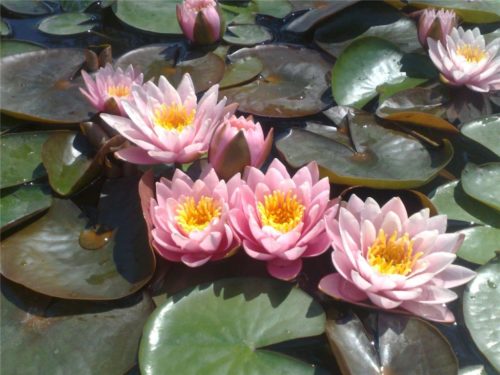
Stem water lishes are powerful rhizomes that are horizontally immersed in the bottom soil or have a tuber shape, from which numerous long roots depart, holding the flower in the reservoir ground.
On the water stroit there are surface leaves and flowers, which their magnificence is fascinating. The form of surface sheet plates is rounded, elliptical, with a pronounced recess. Leaves are dense, with a wax chain, thanks to which they do not wet. The dimensions and color of the surface foliage may differ depending on the type of plant. Decorative leaf leaves can be rich-green or light green, burgundy, motley. Elastic leaf sweets, under the influence of wind or reservoir flow, are freely moving along the surface of the water. The length of the petioles depends on the depth of the pond and the water level in it.
The leaves under water have another building: broad-challenges, film, rolled by a cap, under which flower kidneys and emerging surface leaves are located. On the entire vegetative part of the aquatic plant, air canals are located, which provide him with breathing and allow you to stay on the water.
Nimfei: Sorta
To decorate the decorative reservoir, jugs of different sizes are used, which are selected in the depths of their landing. Nymphi can be divided into three main groups.
Nymphi dwarf. This is a miniature water lily with a flower in diameter from 3 to 15 cm. Plant landing depth - from 15 cm to 50 cm. You can buy dwarf nymphing for the pond in the store, for convenience, dwarf varieties mark "Pigmea". Among the popular varieties used for decorative reservoirs:
- Alba - White Water Lily.
- Rubra - Dark Red Flowers.
- Aurora - grade chameleon, at the beginning of flower flower cream-yellow, orange shade acquires by the end of blossom.
Nymphi is medium. The flower is larger, up to 18 cm. You can plant a depth of 60 cm in a reservoir.
Medium-sized water lily varieties:
- Rosearey is a beautifulwood water lily, in diameter up to 15 cm with soft pink petals that burn out in the sun and acquire a pale, almost white shade. Thanks to this feature, the pond looks especially attractive. It grows into width no more than 1 meter.
- Helvola is a yellow-ceiling nymph.
- Attraction - flower with red petals, dyed white spots of small size.
Nymphany is large. Flowers are large, achieve in diameter up to 25 cm, you can land in a pond to 1 meter in a pond.
Varieties of large-flowered nymphy:
- Chromatella is a yellow water lily, preferring a half, landed in the ponds up to 1.5 meters deep.
- Escarboucle - Nymphi with bright raspberry petals, closes the flower late at night.
How to plant nymph in pond
The success of growing nymphy in the pond depends on high-quality landing. To plant plant, it will take a low wide container with drainage holes to allow rhizomet to grow freely and multiply. Small buckets are suitable for dwarf varieties, for medium and large varieties - 10-12 liters buckets or other large containers. In addition, in flower shops you can buy special baskets for nymphon. Next, you need to prepare the land for landing nymph, the composition of the soil consists of:
- 1/3 wet clay, without sand and comer impurities;
- 1/3 of the garden land, with the addition of peat;
- 1/3 cowhide (burned).
All components need to mix well and put on the bottom of the tank. For landing, the water lily is recommended to first use the humus, and then the soil mixture.
Saw plant, rhizome need to be located horizontally, directing roots down, gradually sprinkling the earth and sealing them. The edge of the rhizoma, the opposite of the growing kidney, must be placed at the wall of the bucket, to give the root to grow freely. In order to prevent the soil flushing with water, a layer of pure sand is poured on top of the earthen mixture and shallow stones or pebbles are put.
Landing the pita nymphs in the pond
Containers with planted water lisms can be installed on the bottom of the reservoir to the optimal depth for them, considering what group they relate to. The depth of planting is calculated based on the surface of the soil in the container, and not from the bottom of the pond. It should be borne in mind that at depth the water has a rather low temperature, as it is badly heated by the sun, leaves and floral kidneys will be much more difficult to get to the surface of the reservoir. However, too small immersion of the tank with a jug is undesirable - the leaves and flowers of the nifia grow quite quickly and after a few days will be over the water. The blossoms of the nifia begin shortly after the landing.
Nymphi after shopping in the store
If you decide to buy a beautiful nymph in the store, where it is sold in a special container, follow the following recommendations:
- After buying a plant, you need to plant immediately, without waiting for it to dry. As a rule, the pitches are sold in containers filled with water or perlite crossed.
- Choosing a plant, pay attention to the number of sleeping kidneys. Consider so that there were no signs of rot. Also carefully examine the rhizome. After purchase, it is advisable to rinse the root of running water so that possible infections or pests in the pond.
Nymphi: Pond Care
Nonphic care is not complicated, it is enough to remove dead flowers and yellowed leaves. It is worth noting that the pita lines very quickly grow on the surface of the pond. When the leaves cover all the reservoir mirror, the flowers become smaller, less often bloom. Therefore, while planting water lilies in the reservoir, it is necessary to leave at least half the pond free and not to plant a large number of plants.
The prerequisite for the care of the pond is its spring cleaning, after the wintering nymph. The capacity immersed in the water must be removed and cleaned from the organic garbage that focused foliage. Also, the pond should be cleaned of garbage and dead coastal plants.
How to propagate the nymphay
Nimifia multiply rhizomes. In an adult plant, a rope with a kidney root is cut into a sharp knife. The location of the cut must be treated with crowded charcoal. The tunnel with a kidney plant in the container in the usual way to landing the nymphon described above. It is less commonly used by a seed method of breeding - the seeds of the nymphy put into the pot and lowered into the water. This method of reproduction is suitable for warm regions.
Wintering nymphy in the pond
Winter-hardy nymphs grown in our region perfectly carry frosty winter, provided that their roots will not freeze the ice in such conditions - under such conditions, the nymphy will die.
If the pond is more than 50-60 cm depth - the nymphany perims perfectly, as it will not freeze the reservoir until the bottom. For reliability, the pond can be inspired by setting on the bottom of the board, foam layers or a double-layer of the film.
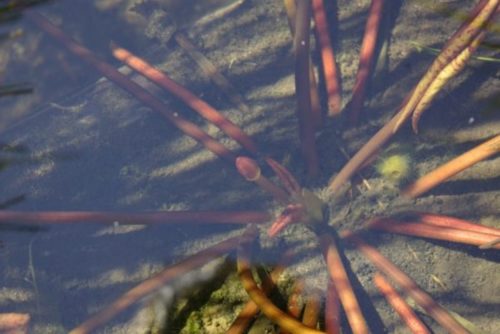
If the reservoir is small, the depth of less than half a meter - on the bottom you can dug a small hole and deepen the roots of the plant on the winter. For small water bodies with an artificial bottom, this method is not suitable, so the container with the root is transferred to the room. It is possible to store pita directly in a container packed in a plastic bag, leaving a place to circulate air. A packed container with a jug is placed in a basement with a plus temperature (from 0 to 10 degrees). During the winter, the soil should be followed, it should be wet, the plant should not dry.
You can store nymph in winter and outside the container where it grew. To do this, remove the plant from the container, crop stems, leaves. In a plastic bag filled with perlite or wet moss, put the rhizome water beauty and put it on the winter in the refrigerator, not forgetting to monitor the moisture of the root.
Pests of Nimfei.
Nymphi almost never suffer. Possible difficulty with which you have to face the cultivation of nymph in a decorative pond - reinforce the roots. The reason for the rotation may be a fungal infection, which was infected with the root when buying, as well as the appearance of poisonous substances in the reservoir. Prevention of the disease - buying a healthy plant and timely thinning of Nymphin.
- The main enemy of the queen of reservoirs is the word. The difficulty of destroying the role is that in the pond can not be applied to the treatment of pesticides. Wash the TRU from the leaves can only be mechanically.
- The pitched leaf is a small bug, which has a brown color. Slides harm water hats in that she puts eggs on the leaves of the plant. The hatched larvae feed on the leaves, having blurred through holes in them. Sheet larvae is collected by hand, and damaged leaves are removed.
- The leaf spot is a disease that is characterized by the appearance of ferrous rounded spots on a leaf plate of water lishes. After some time, the stains increase in the amount, rotate and through holes are formed in the leaves. In the presence of this disease, the leaves should be deleted.
Beautiful, widely opened nymphy flowers surrounded by floating leaves in the pond - fascinate and admire everyone around. Pond with water lily in the garden - garden decoration and pride of any summer house. Observing all the rules of landing and wintering nymphi, you can enjoy their beauty for many years.
Nimfei in the pond, photo

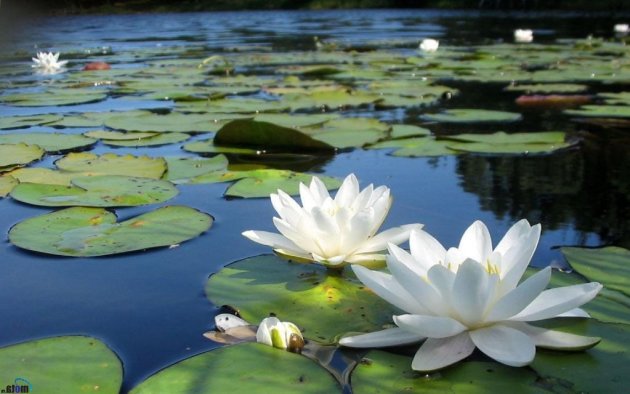
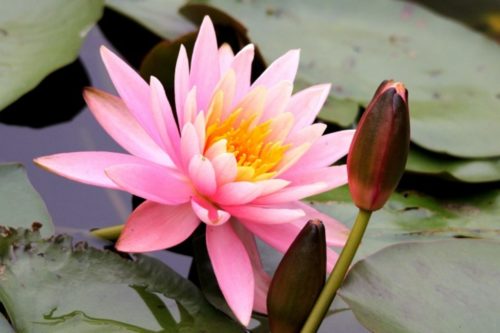
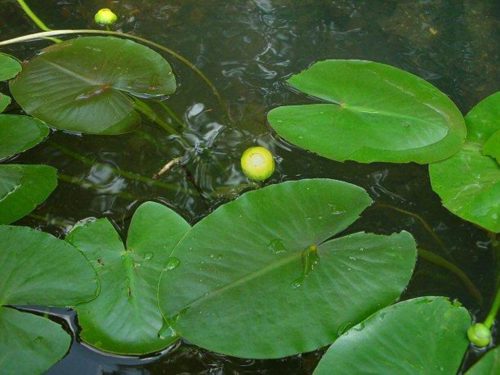

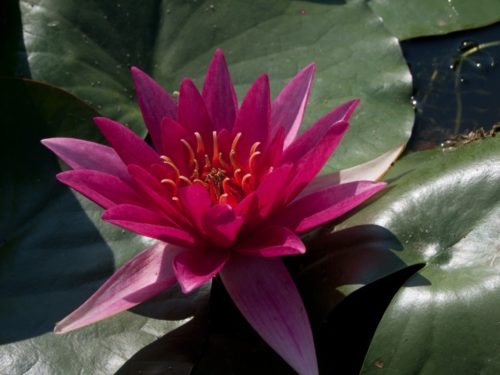
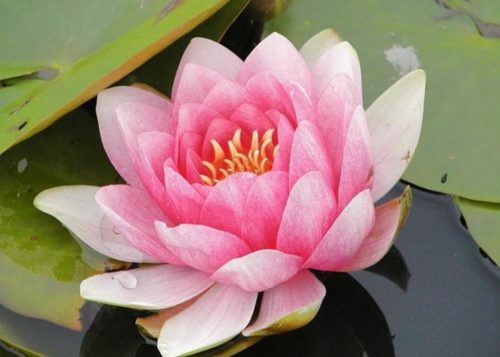
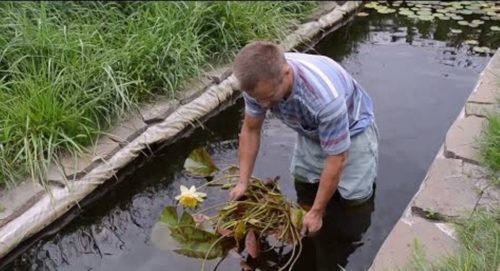
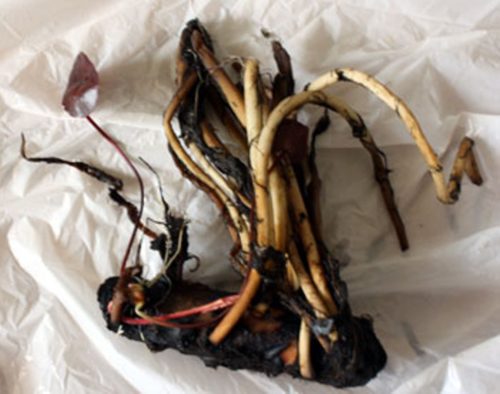
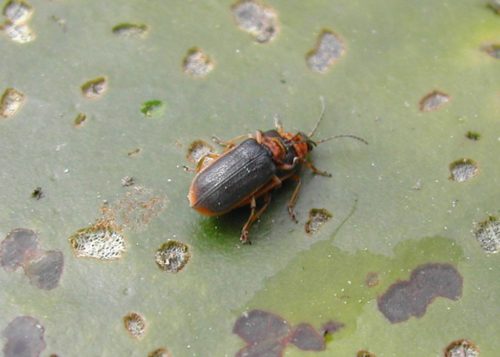
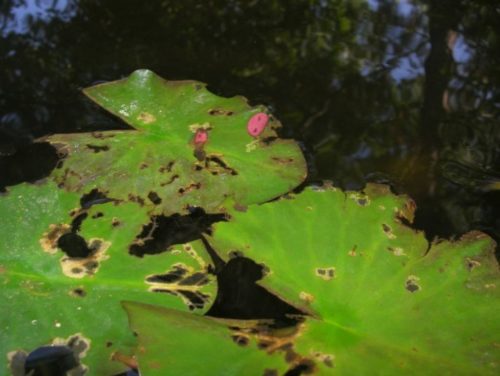

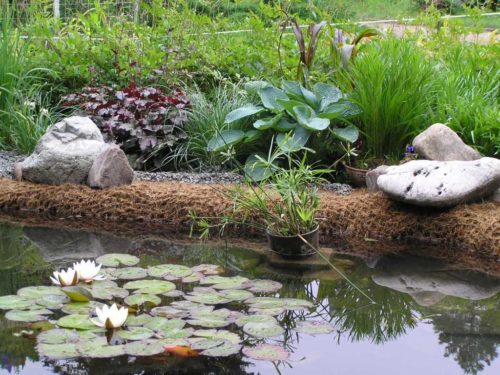
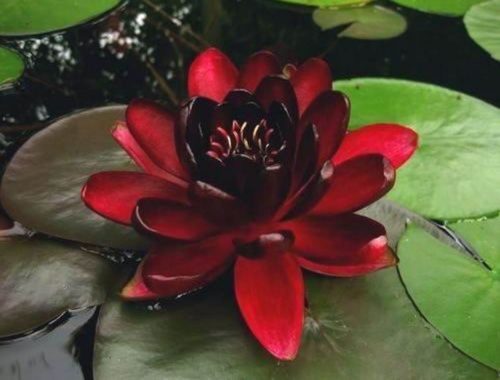
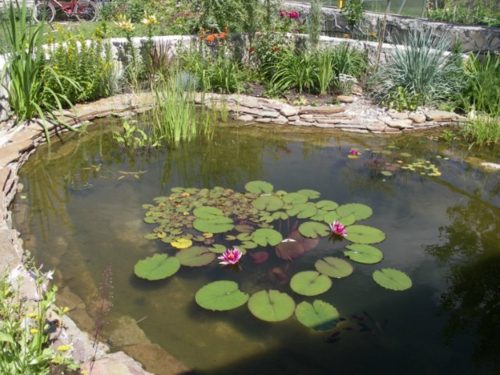
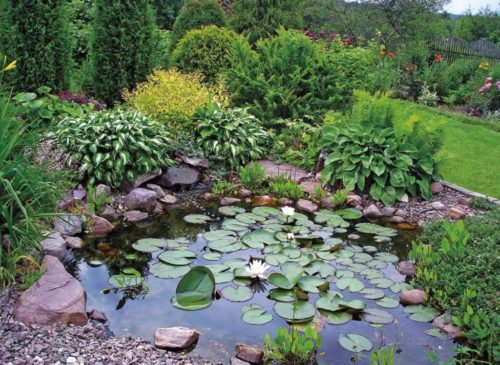

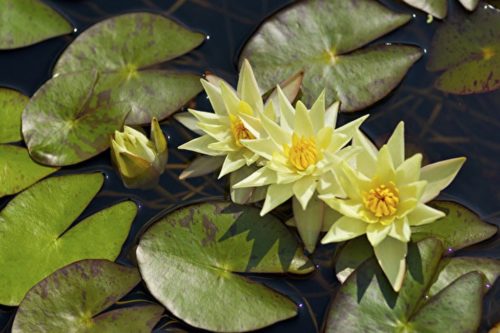

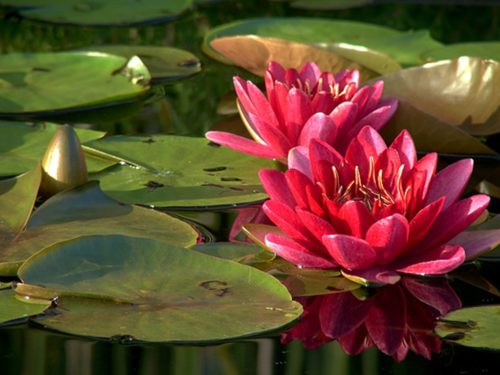












 Start a discussion ...
Start a discussion ...